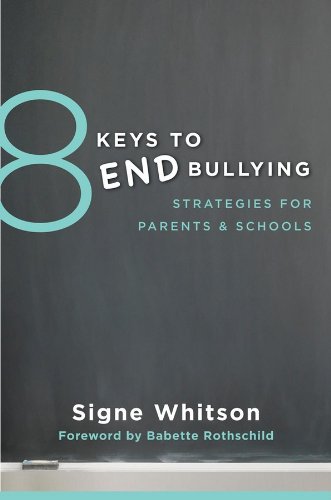Archive for March, 2015
New Review of 8 Keys to End Bullying posted on PsychCentral
0A school playground aide sees third-grader Riley grab hold of classmate Liza’s scarf and choke her with it. Riley is subsequently viewed as the bully. But is there more to the story?
What the aide hasn’t witnessed is the endless ridicule Riley has experienced from Liza and Liza’s best friend, Jada. Liza and Jada have learned they can provoke emotional outbursts from Riley — a girl who has been diagnosed with Asperger’s Syndrome — through constant social exclusion. Riley is a “bully-victim,” a young person who can be aggressive toward others but who can also be a target for bullying. She serves as a reminder that the culture of bullying is far more pernicious than we might realize.
It’s clear that bullying’s nuances do not elude Signe Whitson, a social worker and school counselor who writes about Riley and others in 8 Keys to End Bullying: Strategies for Parents & Schools. In this comprehensive book, Whitson argues with passion and clear-eyed conviction for various methods by which we can create safer and healthier learning environments.
Refreshingly, Whitson doesn’t build her case on untested anti-bullying advice, but instead takes a sledgehammer to many long-held myths by drawing upon real research. For example, Whitson points out, children are frequently told to ignore verbal bullying, but the literature shows this to be one of the least effective methods available. And bullies are often not driven by insecurity, as is commonly portrayed in the movies, but by a drive to increase their social status, Whitson writes.
From Whitson’s realistic understanding of student dynamics comes a practical set of strategies to reduce bullying in schools. Click here to read more about these strategies and see the full review from PsychCentral.
